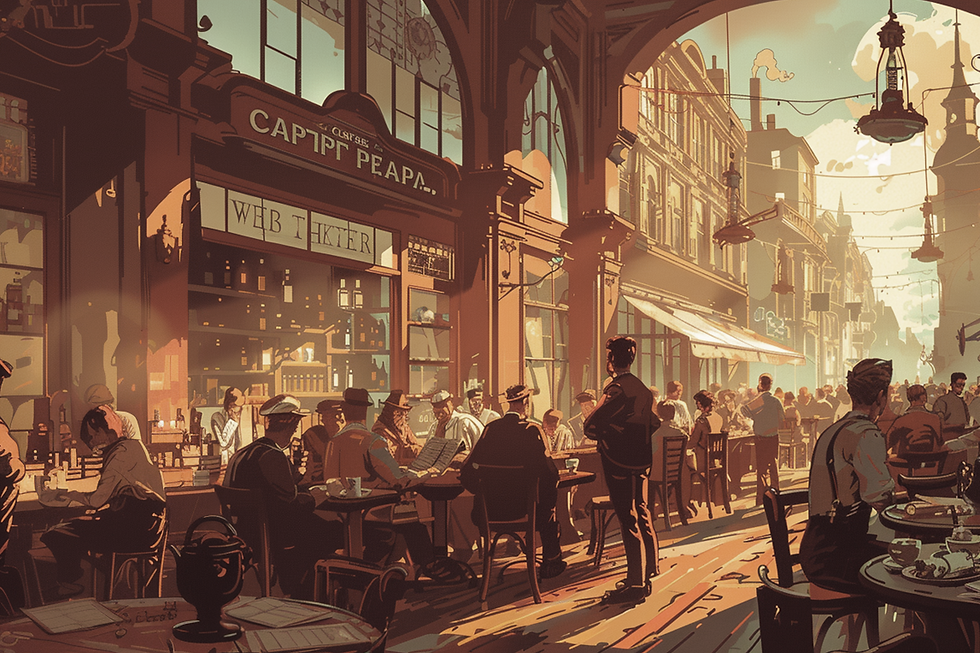Article 2: Laboratory of The Great Gambit
- Zhenya Luchaninau
- Oct 23
- 3 min read
In the previous article, I broke down the three core components that shaped our challenge: the educational core, the game elements, and the classroom constraints.
That challenge led us to a design structure that could hold all three forces: the idea of a Laboratory.
Not a metaphorical lab, but a very specific format — something that could:
engage students through direct experience (the game),
invite reflection and discussion (education),
and still fit within the rigid boundaries of real classrooms (time, tech, teacher bandwidth).

The Laboratory Format
Here’s how we see it: students first experiment inside the game — they live through complex situations, make decisions, and experience the consequences. Then, in the second phase, they work with that experience — analyze it, make sense of it, and try to connect it to historical realities. That’s what makes it a laboratory. You try something, and then you study what happened.
In this lab, the teacher isn’t a lecturer at the board — they’re the head of the project. A kind of lead investigator. Someone who doesn’t just explain the past, but joins students in figuring it out. They guide attention, facilitate discussion, and help the group trace meaning from experience. Their role is closer to that of a Dungeon Master or research supervisor than a traditional instructor.
This two-phase format — active experiment + reflective processing — became the backbone of The Great Gambit. Let’s look at each part.
Phase 1 — The Game
Any game has three key components:
Context — where everything happens, what conditions are set initially.
Gameplay — how players interact, what actions, limitations, and consequences they have.
Goal — what the player strives for, what is considered success or failure.
For our game, we chose:
Context — Germany of the late 19th to early 20th century. A new nation, rapid development, internal tensions.
Gameplay — intergroup behavioral dynamics under pressure.
Goal — prevent the outbreak of World War I.
Yes, many questions might arise here. Why Germany specifically? Why within a single society? Why not simulate diplomacy between nations? These are all important questions, and we'll address them in future articles.
Phase 2 — Reflection
The second phase of the laboratory is where students make sense of what they experienced.
We structure it more as a discussion, not a lecture. Students are asked to reflect on their decisions, the consequences, and the group dynamics they observed. Then, with the teacher’s guidance, they connect that to historical patterns: Why did things escalate? Could war have been avoided? What parallels do we see with real history?
This process works better than a traditional discussion because everyone has lived through the same experience. Nobody is left out because they didn’t do the reading — they were there. They felt the tension. They made the choices. That “fertile ground” makes it easier to bring everyone into the conversation.
To deepen the experience, we’re also developing interactive materials — interactive presentations and mini-games. Not quizzes, but small, playful systems that help unpack specific historical dynamics. Think of them like surgical tools: precise and engaging ways to open up a particular concept.
Fitting the Lab Into Classroom Constraints
1. Ease of Entry
To avoid wasting lesson time on instructions, we created 10-minute video walkthroughs that students and teachers can watch the day before. These videos explain the gameplay basics so that the session can start right away.
The technical setup is minimal: no Wi-Fi needed, everything runs locally, and one laptop per group is enough. No installations. No accounts. Just plug in and go.
2. Lesson-Friendly Format
The lab unfolds across two standard-length lessons:
One 80-minute session is dedicated to the game.
The next 80-minute session is for reflection.
This keeps things simple: each lesson has one focus. There’s no need for restructured schedules or special blocks of time. Just two normal lessons with a shared arc.
3. Flexible Structure
In our ideal vision, the lab is modular. That means a teacher could remix the sequence, replace parts, or expand on them. Want to insert a documentary in the middle? Go for it. Want to adapt the reflection to fit another curriculum topic? Totally possible.
Right now, this modularity is a direction we’re working toward — not fully implemented yet. But the structure is being built with that kind of flexibility in mind.



Comments